Basic Anatomy of the Ant Know your Pest

Anatomy of an Ant Ants AntKeeping AntCare Hobby Thorax, Anatomy
Anatomy of Ants Ants are fascinating creatures with a complex anatomy that allows them to thrive in various environments. Understanding the anatomy of ants provides insights into their structure, behavior, and capabilities.

Identifying household ants Insects in the City
What are the different parts of an ant? How do you tell which are ants? Let's take a look at the parts that make up an ant, called their "anatomy". You might have heard insects have three body parts: the head, thorax, and abdomen. Ants, however, are different.
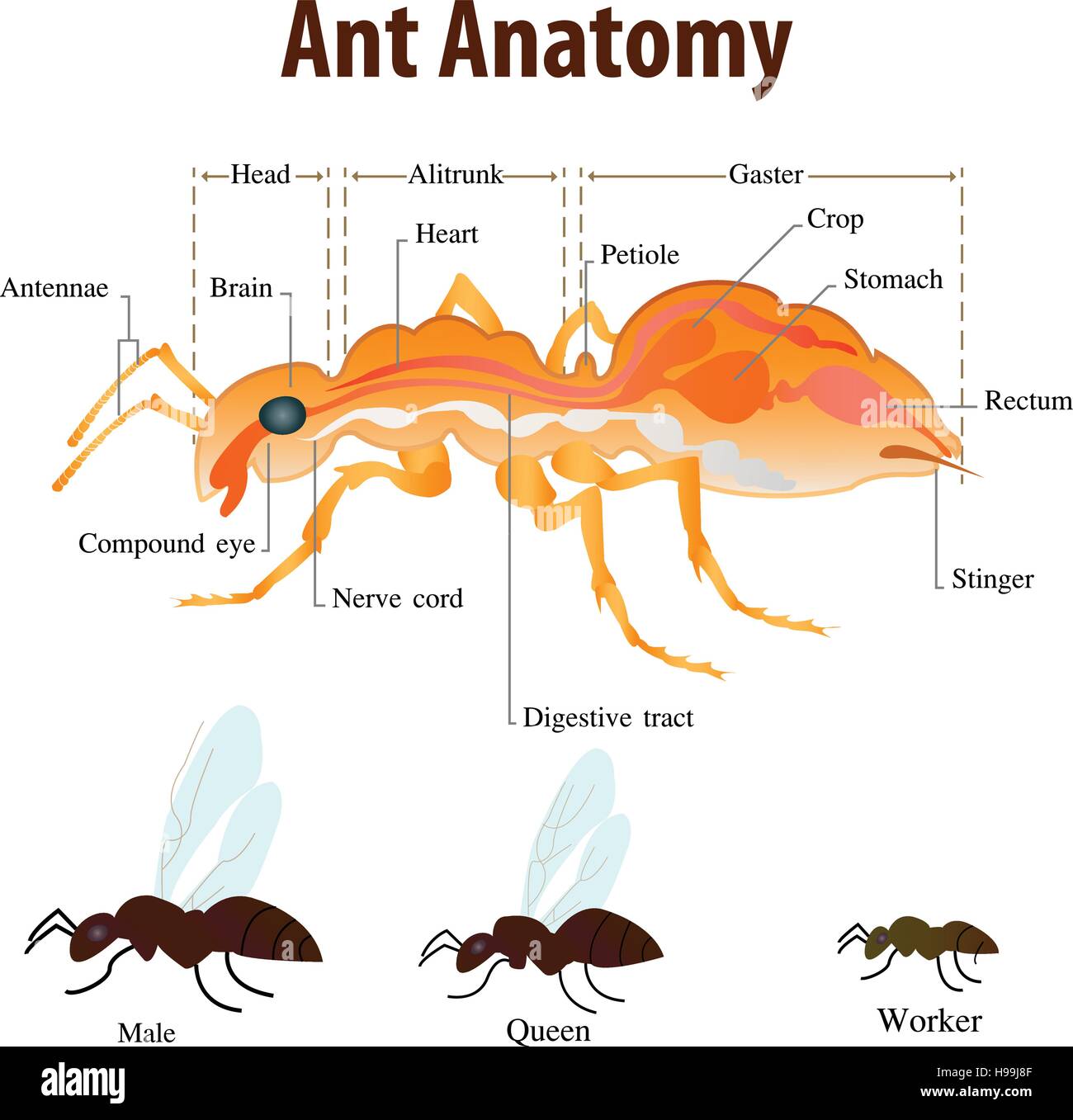
Vector illustration of Ant anatomy Stock Vector Art & Illustration
Gena. (pl. genae) Area of the side of the head which is bounded in front by the anterior margin of the head capsule, and extends to the posterior margin of the head, below the eye when eyes are present. In ants the gena is expanded ventrally and forms the extensive ventral surface of the head, the genal bridge.
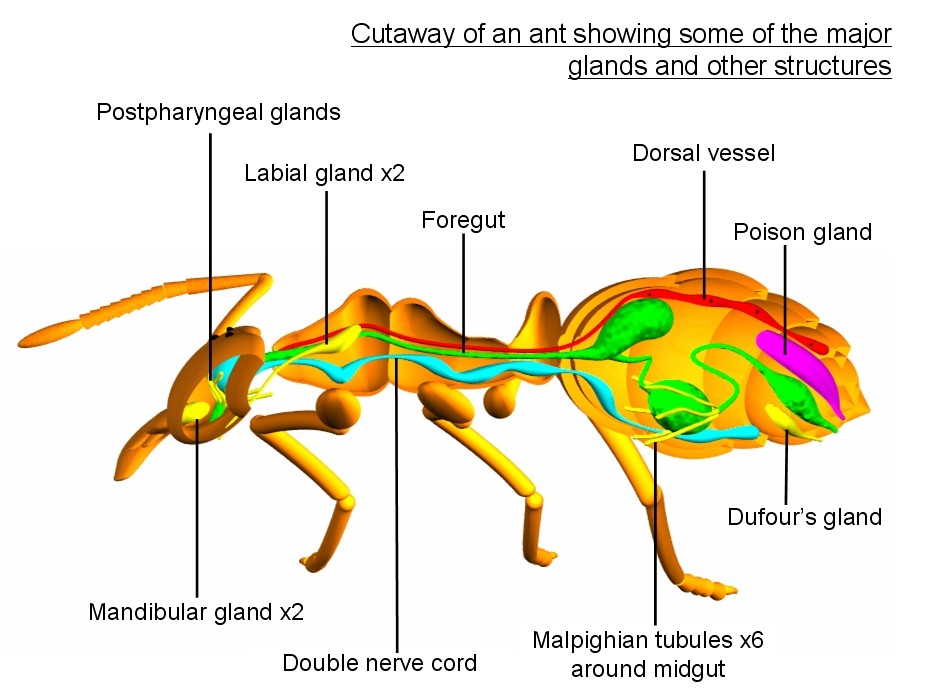
All about ants brainy 'Superwomen' of the insect world Wildlife
The abdomen of ants, however, remains critically understudied. To address this shortcoming, we describe the abdominal anatomy of Amblyopone australis Erichson, using a multimodal approach combining manual dissection, histology, and microcomputed tomography. We focus on skeletomusculature, but additionally describe the metapleural and metasomal.
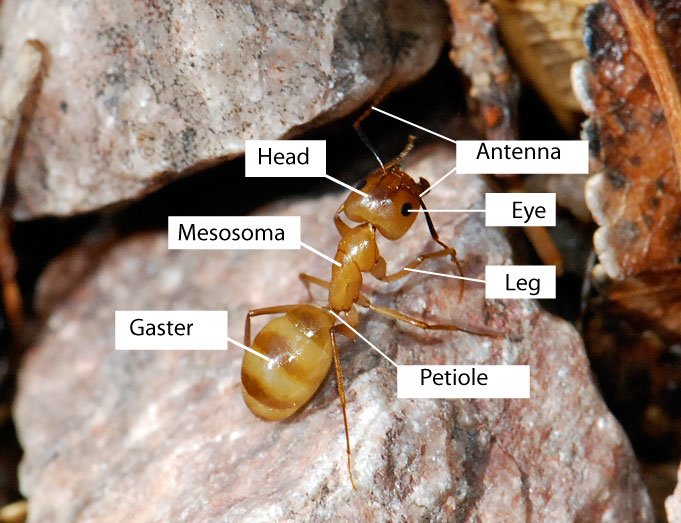
Anatomy of Ants Wild About Ants
Ant Anatomy Like all insects, ants have six legs. Each leg has three joints. The legs of the ant are very strong so they can run very quickly. If a man could run as fast for his size as an ant can, he could run as fast as a racehorse. Three main areas of an ants body Most insects have three parts to their body and ants are no exception.
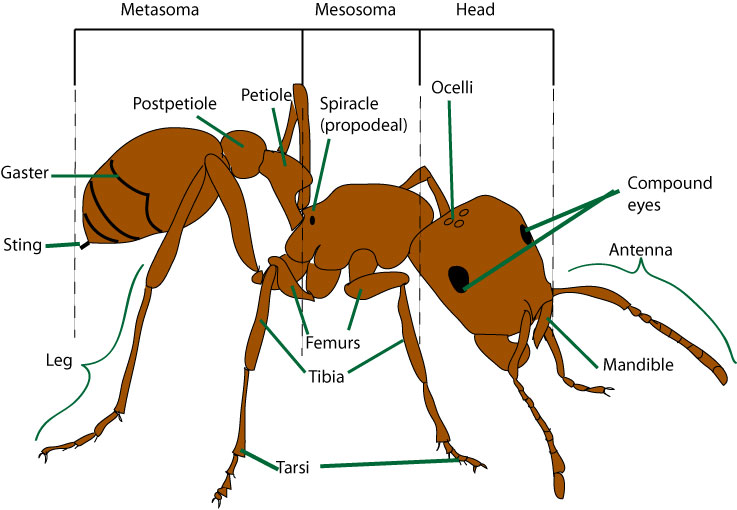
Ant anatomy (ant morphology) Myrmecological News Blog
The Anatomy of Ants: Understanding their Body Structure and Role Share: Table of Contents Head Structure Antennae Eyes Mandibles Thorax Legs Wings Abdomen Petiole Gaster Stinger Ant Castes Queens Workers Males Ant Senses and Communication Chemical Signals Tactile Communication Auditory Communication Introduction to Ant Anatomy

Little black ants in Round Rock, Texas Bugs In The News
Anatomy of a Worker Ant All ants may look the same to you, but if you look closely at workers from different ant species, you may see some differences. We have pointed a few of them out using an asterisk ( * ) symbol. Think you know all these parts? Try our ant anatomy activity. What's Inside an Ant?
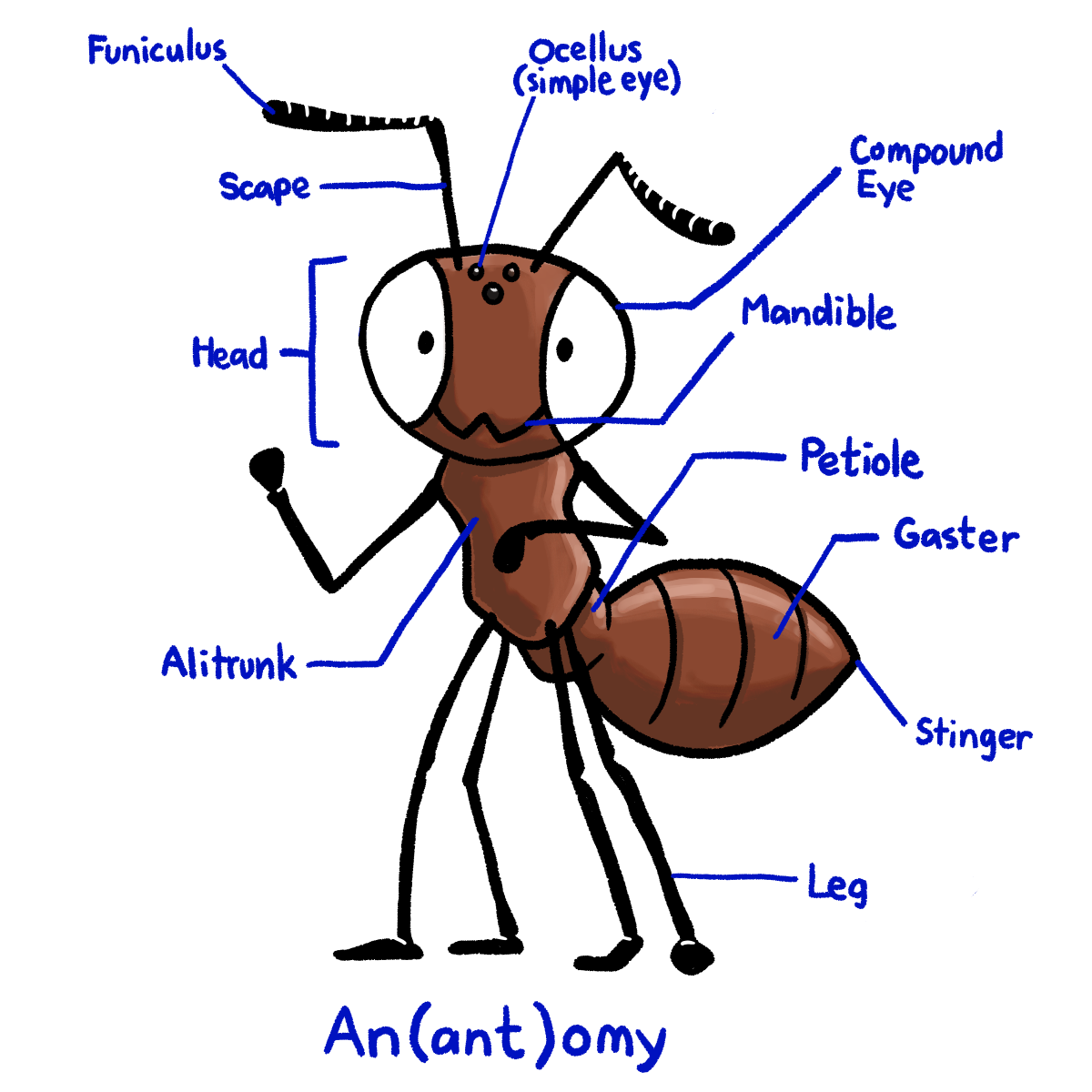
Ants Anatomy Anatomical Charts & Posters
An ant's body is divided into 3 main segments. The head, the Mesosoma, and the Metasoma. The head of an ant has some very important parts. The eyes, the antennae, and the mandibles. The eyes are compound eyes which means they have many small lenses connected together.
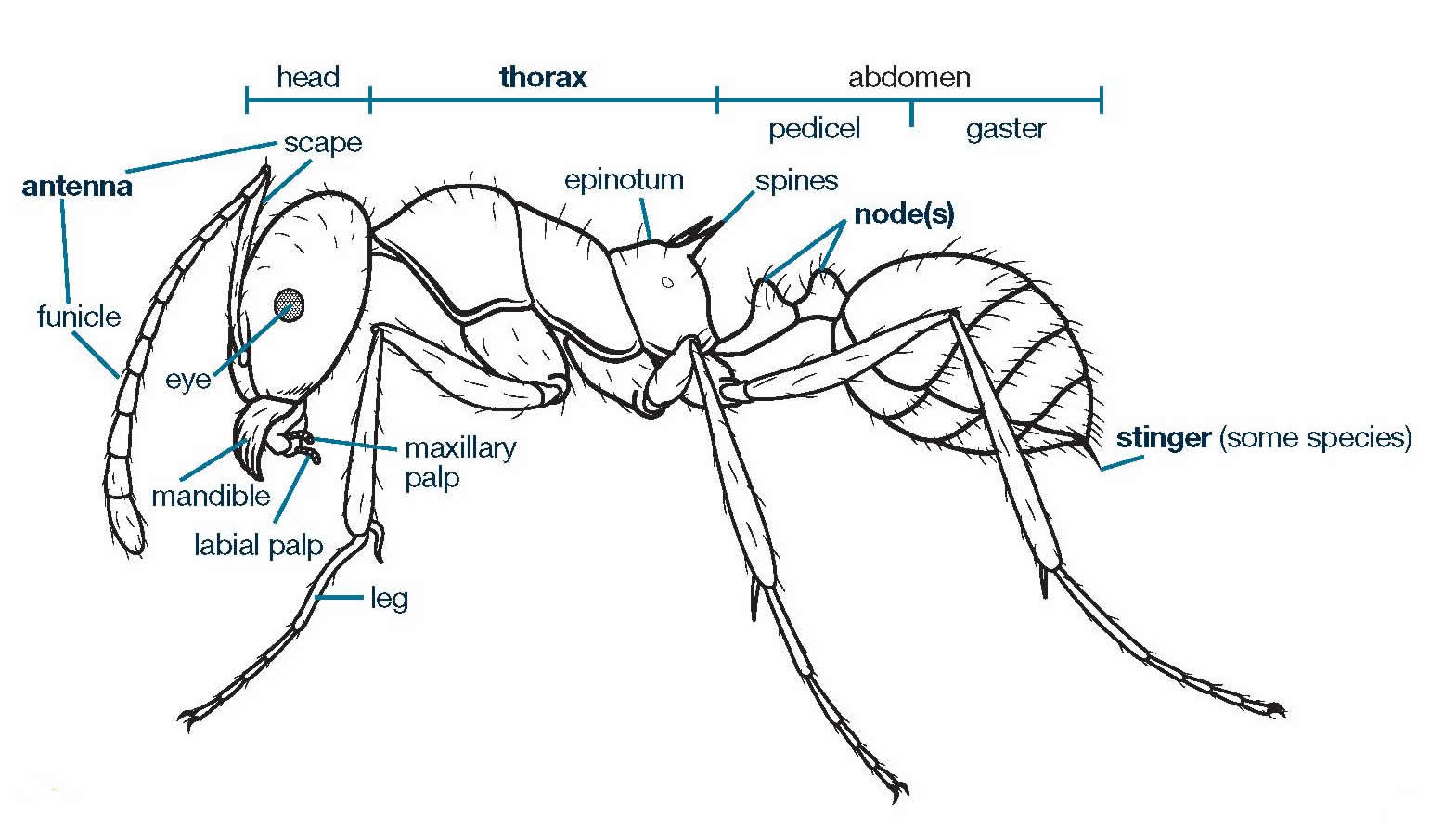
Basic Anatomy of the Ant Know your Pest
Learn about Internal Ant Anatomies. Including the: brain, heart, nerve cord, crop, stomach, rectum, poison glands and the Dufour's gland.
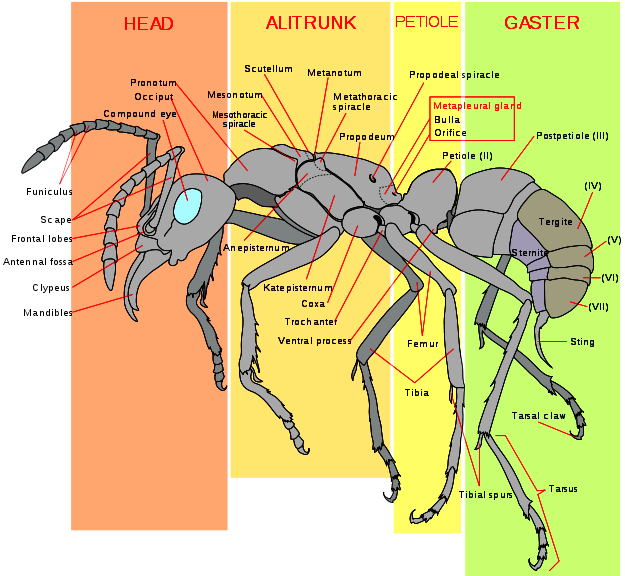
ANTS
Like all insects, an ant's body is divided into three main parts: the head, the thorax, and the abdomen. Ants have a hard, waterproof exoskeleton, which is made of a material called chitin. They are exceptionally strong for their size: they can lift 10 times their own weight! Most ants have two large compound eyes.

Ant Anatomy How Are Ants Built? (Body Composition)
Ants undergo complete metamorphosis, passing through a sequence of four stages: egg, larva, pupa, and adult. An ant's life begins as an egg. Ant eggs are soft, oval, and tiny - about the size of a period at the end of a sentence. Not all eggs are destined to become adults - some are eaten by nestmates for extra nourishment. An egg hatches into a worm-shaped larva with no eyes

13 Types of Ants that Commonly Invade Homes
The anatomy of ants - inner organs. Ants do not have a heart like we do, or other mammals for that matter. Instead, they have one big (in ant measurements) artery, starting from the brain, working its way through the body parts. Their blood is not red either, but rather uncolored and transparent. Much the same way as the "heart" artery.

Diagram showing parts ant Royalty Free Vector Image
show/hide words to know Humans have many different types of faces, but none of them are as different as the collection of ant faces below. You can tell a lot about an ant from its face. The shape of the head and mandibles and size of the eyes can reveal the diet and lifestyle of an ant species.
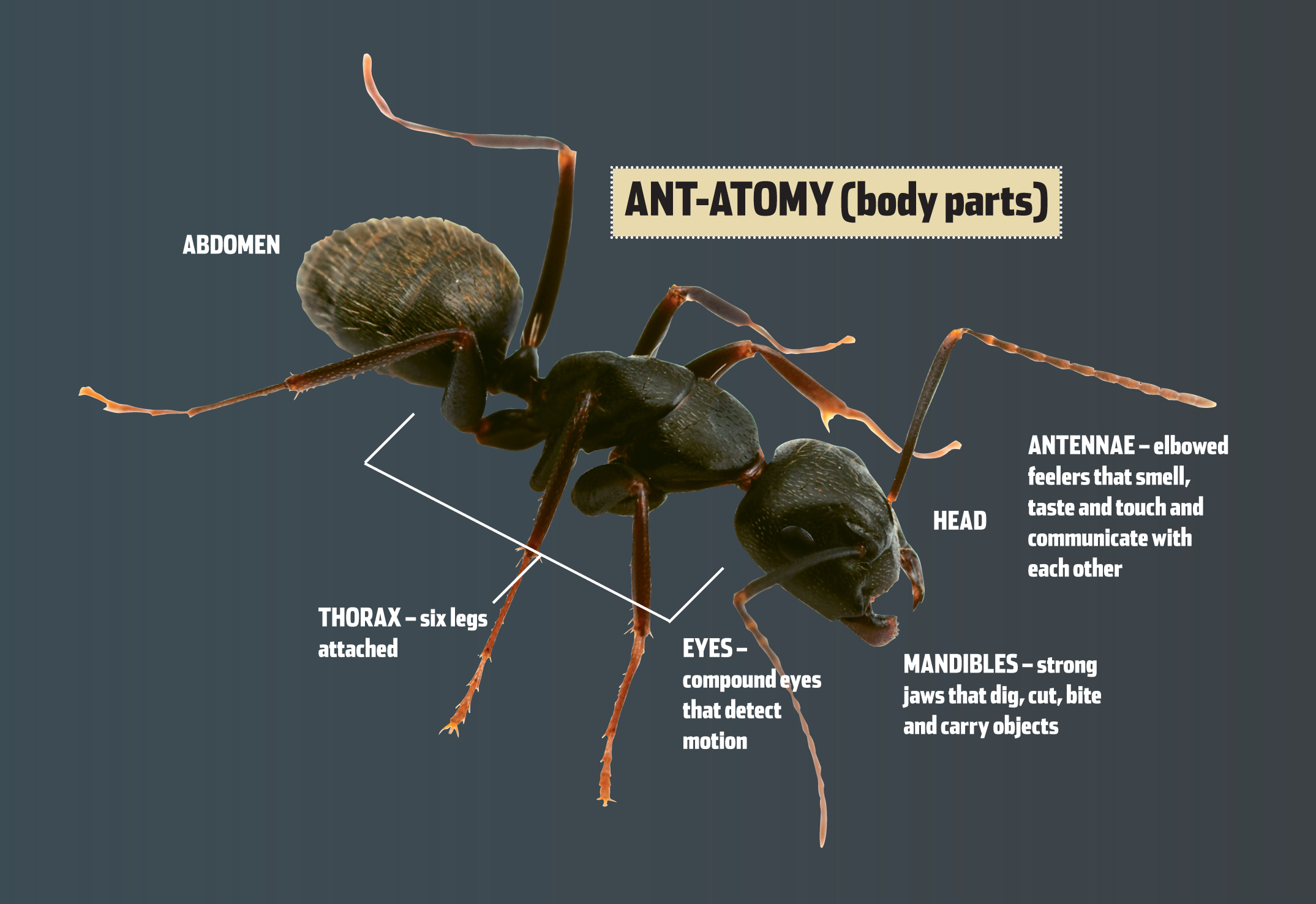
Student Research Pages Awesome Ants — Texas Parks & Wildlife Department
This is apparent from integrative studies which nicely combine anatomy with ecology and behavior to a great success in a few insect groups (e.g., references13,14,15,16,17). Though the field of ant navigation and ant behavior in general has been quite successful, very little emphasis has been placed on ant vision outside of a few selected species.

External anatomy an ant on white background Vector Image
Ants have three body parts: head, thorax, and abdomen. Ants have 2 antennae on their head. Ants have 6 legs - three on either side of their body. Ants have mandibles which they use for eating, chewing and biting. Some ants have stingers. Every ant has a head, thorax, and abdomen.

Ant Anatomy The Myrmecologist
The head of an ant is a vital component of its anatomy, housing sensory organs and specialized tools crucial for survival. Let's break down the key parts of an ant's head: Antennae Noteworthy for their sensitivity, antennae play a pivotal role in perceiving the ant's environment.